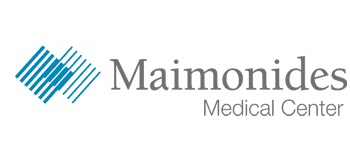Frequency of Formula Change Prior to the Accurate Diagnosis of Pyloric Stenosis
| Status: | Completed |
|---|---|
| Conditions: | Gastrointestinal |
| Therapuetic Areas: | Gastroenterology |
| Healthy: | No |
| Age Range: | Any |
| Updated: | 8/19/2018 |
| Start Date: | September 28, 2006 |
| End Date: | December 8, 2008 |
The purpose of this study is to determine if there is an increase in the frequency of formula
change in patients with pyloric sctenosis prior to being correctly diagnosed.
change in patients with pyloric sctenosis prior to being correctly diagnosed.
The study can be described as a prospective and retrospective study in which information will
be gathered from questionnaires, analysis of medical records, and the information obtained
from diagnostic procedures (i.e. Laboratory results, ultrasonography). The time of enrollment
will be at the time of hospital admission for the study group and the control group. The
length of time for which the patient will be involved with the study will coincide with the
length of stay in the hospital. This will be a single center trial involving Maimonides
Medical center. Approximately 50-100 subjects will be enrolled overall to give the study more
credibility.
Methods and Procedures:
1. Study Participants: All patients admitted to Maimonides Medical Center with a diagnosis of
pyloric stenosis two to nine weeks of age. Patients will be excluded from the study if there
is a diagnosed milk allergy, history of prior abdominal surgery, or history of prematurity or
metabolic disease. Controls will be made up of the same age range, with similar exclusion
criteria, and will consist of patients admitted for other reasons than listed above, such as
bronchiolitis and rule out sepsis.
2: Data: Data will be received through the completion of questionnaire.
3. Data collection and processing: Questionnaire responses will be analyzed and the responses
will be statistically analyzed for correlation.
Benefits: Through participation in this study, patients may help future patients diagnosed
with pyloric stenosis be brought to the attention of a medical professional.
Risks: With maintenance of confidentiality, risks to participants in this study are
negligible.
be gathered from questionnaires, analysis of medical records, and the information obtained
from diagnostic procedures (i.e. Laboratory results, ultrasonography). The time of enrollment
will be at the time of hospital admission for the study group and the control group. The
length of time for which the patient will be involved with the study will coincide with the
length of stay in the hospital. This will be a single center trial involving Maimonides
Medical center. Approximately 50-100 subjects will be enrolled overall to give the study more
credibility.
Methods and Procedures:
1. Study Participants: All patients admitted to Maimonides Medical Center with a diagnosis of
pyloric stenosis two to nine weeks of age. Patients will be excluded from the study if there
is a diagnosed milk allergy, history of prior abdominal surgery, or history of prematurity or
metabolic disease. Controls will be made up of the same age range, with similar exclusion
criteria, and will consist of patients admitted for other reasons than listed above, such as
bronchiolitis and rule out sepsis.
2: Data: Data will be received through the completion of questionnaire.
3. Data collection and processing: Questionnaire responses will be analyzed and the responses
will be statistically analyzed for correlation.
Benefits: Through participation in this study, patients may help future patients diagnosed
with pyloric stenosis be brought to the attention of a medical professional.
Risks: With maintenance of confidentiality, risks to participants in this study are
negligible.
Inclusion Criteria:
- infants ages 2-9 weeks
Exclusion Criteria:
- infant not ages 2-9 weeks or patients with history of medical problems
We found this trial at
1
site
Maimonides Medical Center At 103 years old, Maimonides Medical Center remains a vital and thriving...
Click here to add this to my saved trials
